I thought I was going to be excited heading to the Duluth Air Show to see the Navy Blue Angels perform. But when my SIGMA 100-400mm F5-6.3 DG OS HSM | Contemporary lens showed up in time to take it along, I knew the excitement of trying that lens for air show photography far exceeded anything else.
The 100-400mm range has dominated air shows for years. Versatile, fairly sharp, and somewhat in a lot of budgets. Just from seeing the Sigma press release on this lens, I knew it would be versatile…very sharp…and would fit in a LOT more budgets than the competition. That said, I was also taking along my SIGMA 150-600mm F5-6.3 DG OS HSM | Contemporary lens, which to me is the best air show lens around.
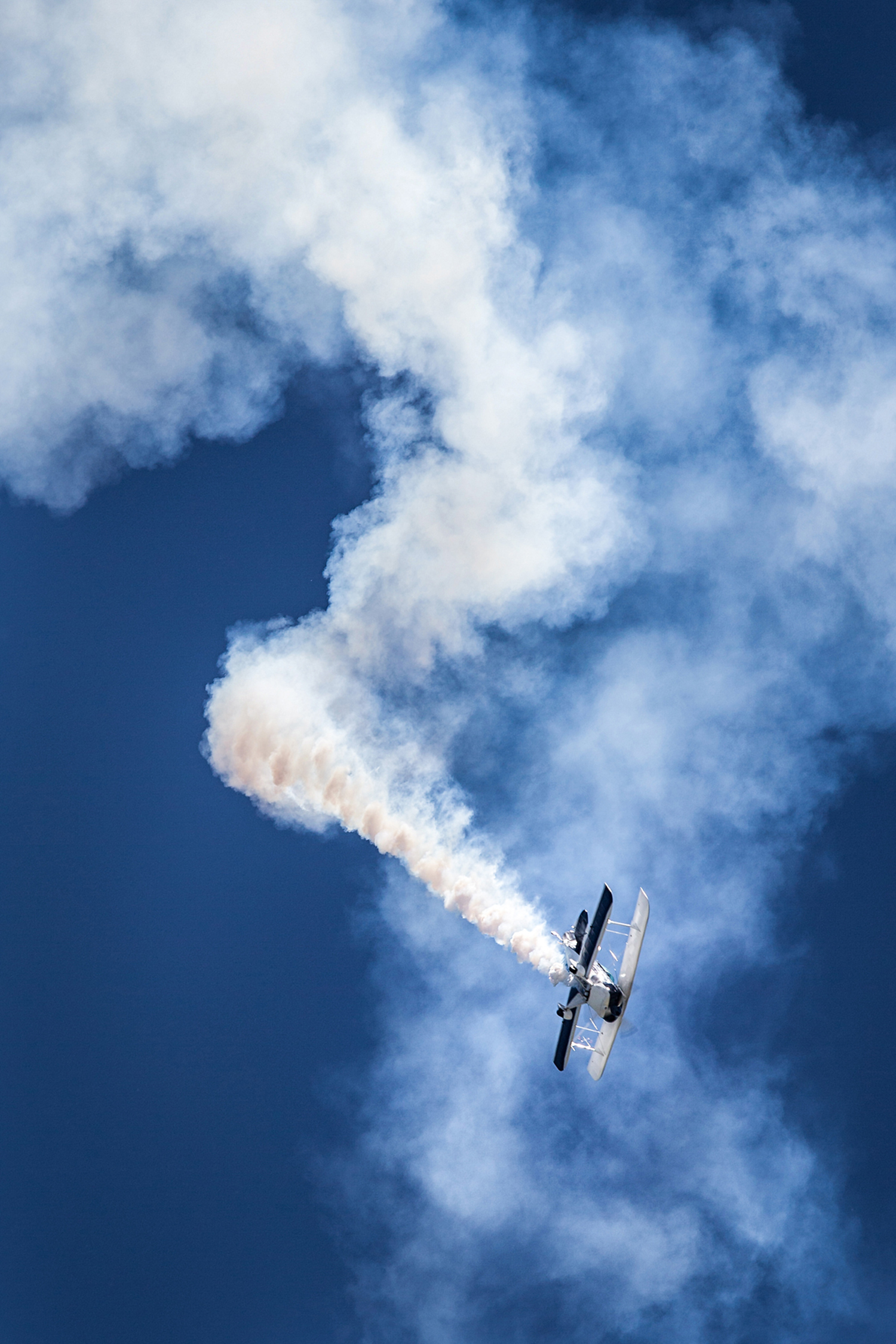
One advantage of the 100-400mm | C lens became apparent as soon as I parked the car. It was a two mile walk to the entrance. In terms of weight and size, the 100-400mm | C is easy to carry. It has the look and size of a 70-200mm on your camera. And after the first mile of walking, you start to notice why one might want to pick this lens for an air show. Once on the grounds, the lens was paired up with a full frame Canon 1DX. Available for the longer reach was my 150-600mm F5-6.3 DG OS HSM | Contemporary on a full frame Nikon D5. I wish I would have had a crop sensor camera with me, but I will at AirVenture Oshkosh in July, so I can’t wait to photograph an air show with the added reach the crop sensor creates.
The forecast for rain disappeared and I was presented with a beautiful cloud background at air show time. I decided to shoot in RAW format for the air show because it would give me more flexibility for color adjusting and cropping in post production. For me, being able to crop in tighter on an airplane in post production can create a more dynamic final product.
The first few performances were small propeller-driven planes. At many airshows spectators and photographers are kept at such a safe distance that the performers seem to just be a speck in the sky. While a good time to switch to the SIGMA 150-600mm | C, I had another plan. I look for patterns in the smoke that trail behind the airplane. Shoot wider and frame the airplane in the smoke patterns.
Most air show acts will also make one or two low photo passes during their performance, so there is usually a chance to get a tighter shot. I shoot in shutter priority so I can pick the appropriate shutter speed for the airplane that a is performing and the camera will pick the f stop. I start off with a shutter speed of 1/400th of a second for a propellor plane. At this speed it will almost freeze the propellor, but it gives me a sharp photo as well as time to practice my panning. Then, I start lowering the shutter speed to at least 1/250th of a second. A bit more blur and still some sharp photos from my panning attempts.
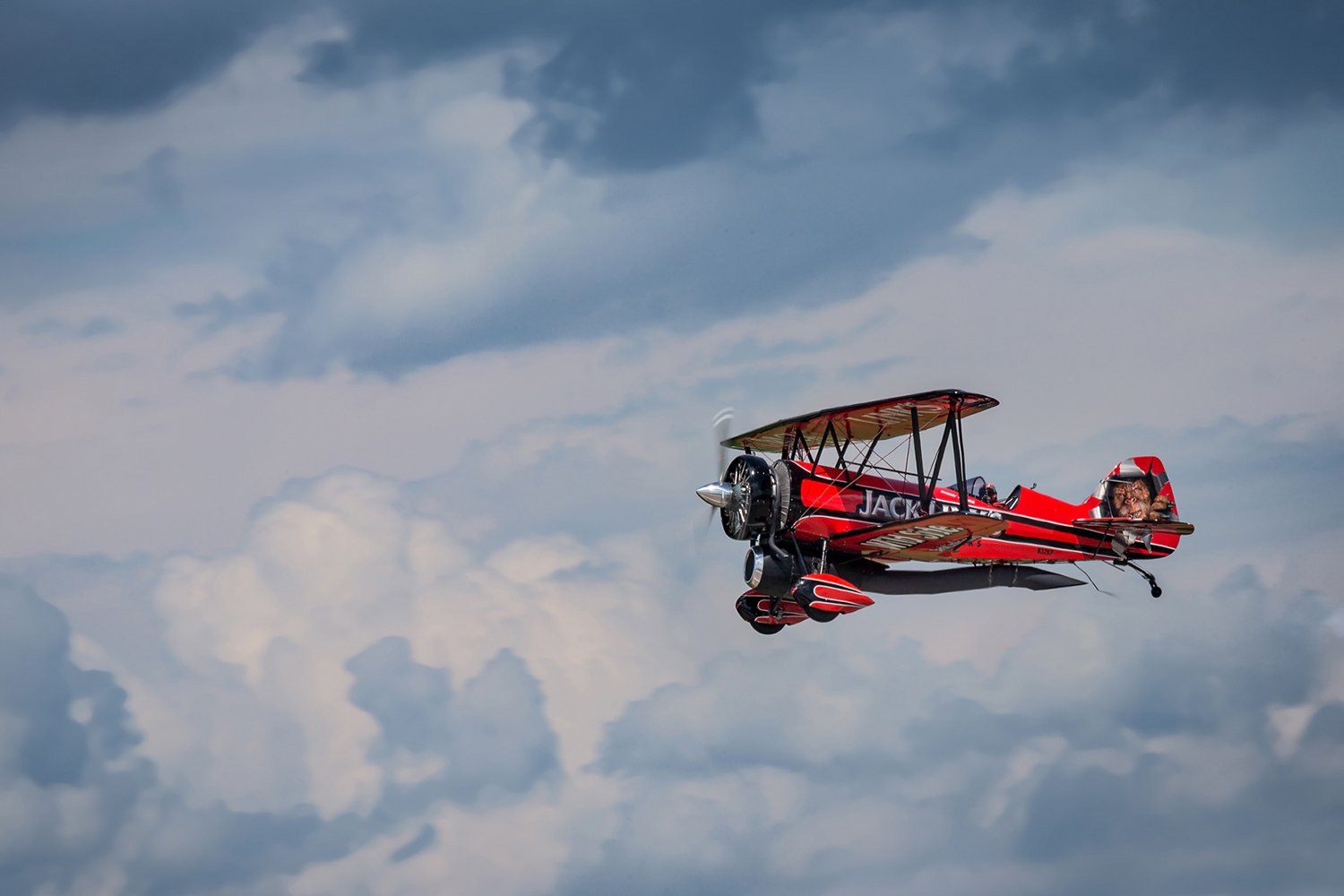
The 100-400mm F5-6.3 DG OS HSM | Contemporary locked on quickly with autofocus and was easy to hold during panning. I should add I also turn OS on the lens when I’m shooting under 1/500th of a second. Since I was panning, mode 2 was my OS selection on the lens. I have a bad habit of holding my camera/lens too close to the camera mount sometimes when I shoot. I found it much more efficient to hold the 100-400mm | C by the lens hood. In fact, SIGMA has a knurled edge built into the end of the lens hood which is perfect to grip.
Next up was a series of jets. Shutter speed now upped to 1/2500th of a second to really freeze the action. While some might think that is higher than needed, I find it gives me some advantage in panning a jet moving at 400mph. Even if I’m off a bit with my pan, the fast shutter speed may help giving me a sharp photo. And, OS moved to the off position since it’s such a fast shutter speed.
Sitting in front of me was an F-35A jet in preparation to perform in the show. I had a good angle on the plane, so I shot a few quick photos. About that time a jet truck came out on the runway to wow the crowd with smoke and fire. But as the crowd was watching the truck performance, my eye caught the dramatic backdrop the billowing white smoke made behind the F-35A. I quickly shot a few more frames before the smoke drifted away.
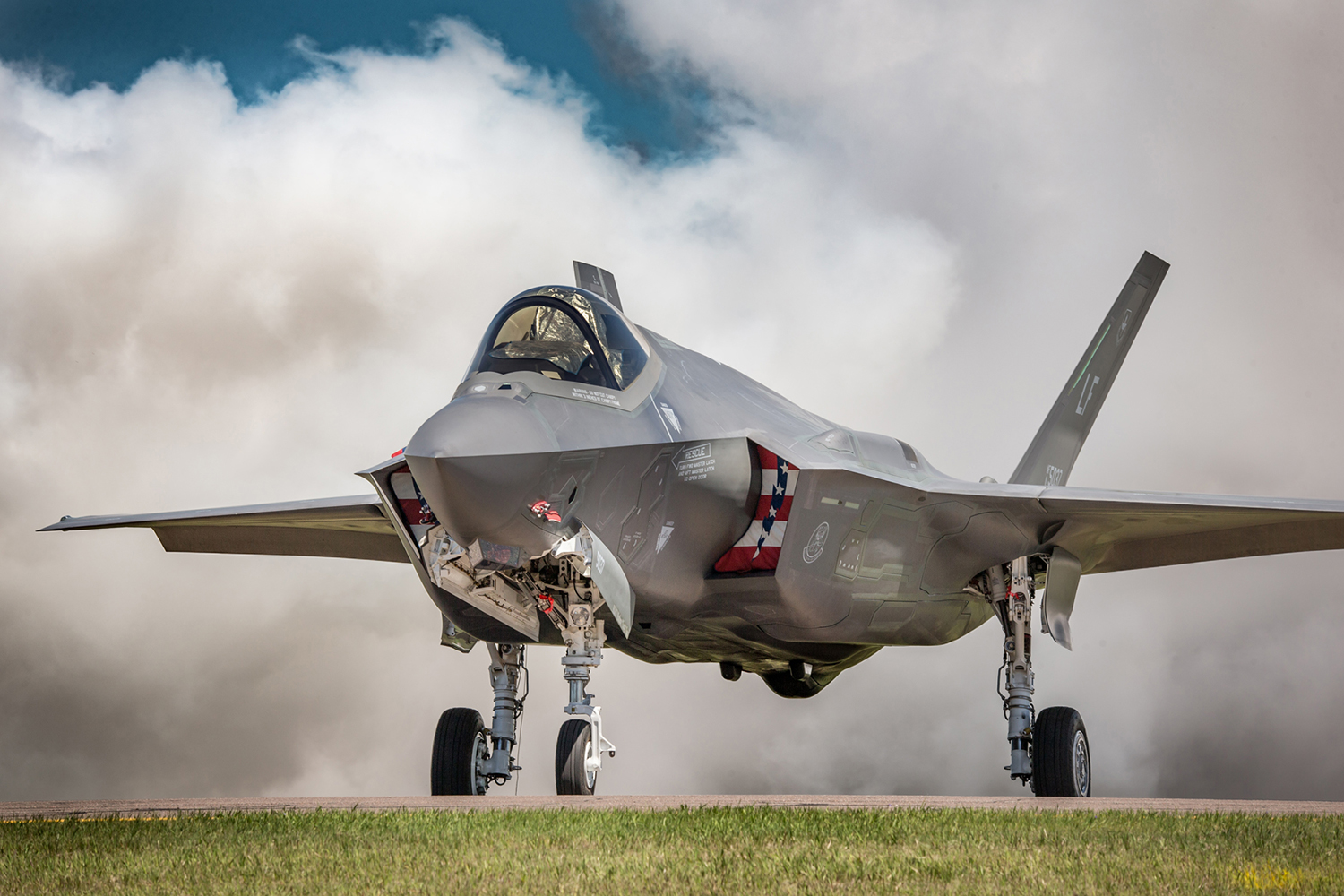
I was feeling very comfortable with the 100-400mm | C, but decided halfway through the F-35 Heritage flight to switch over to the 150-600mm | C because the planes had moved farther away from me and I wanted to capture them as they moved through a beautiful cloud background.
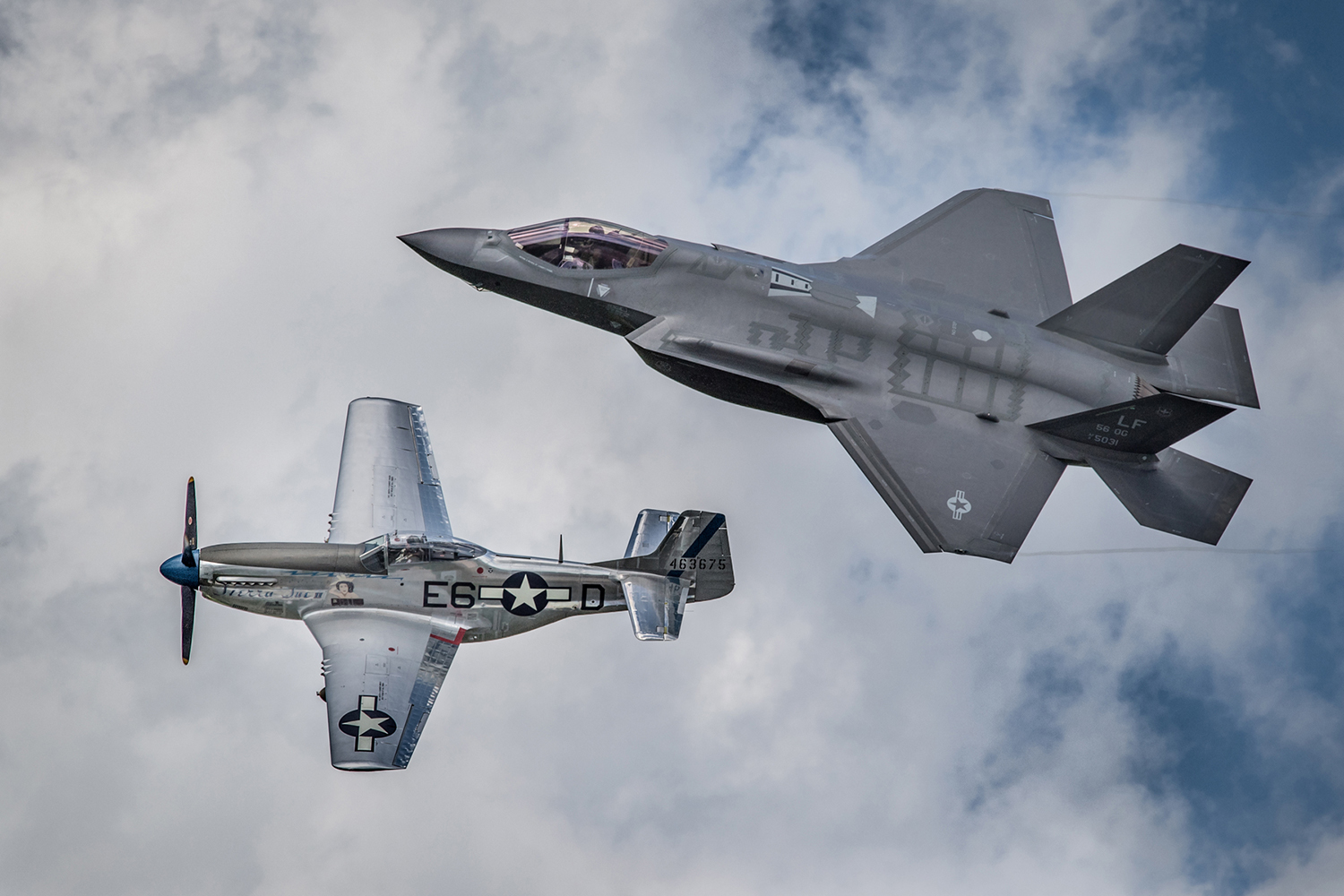
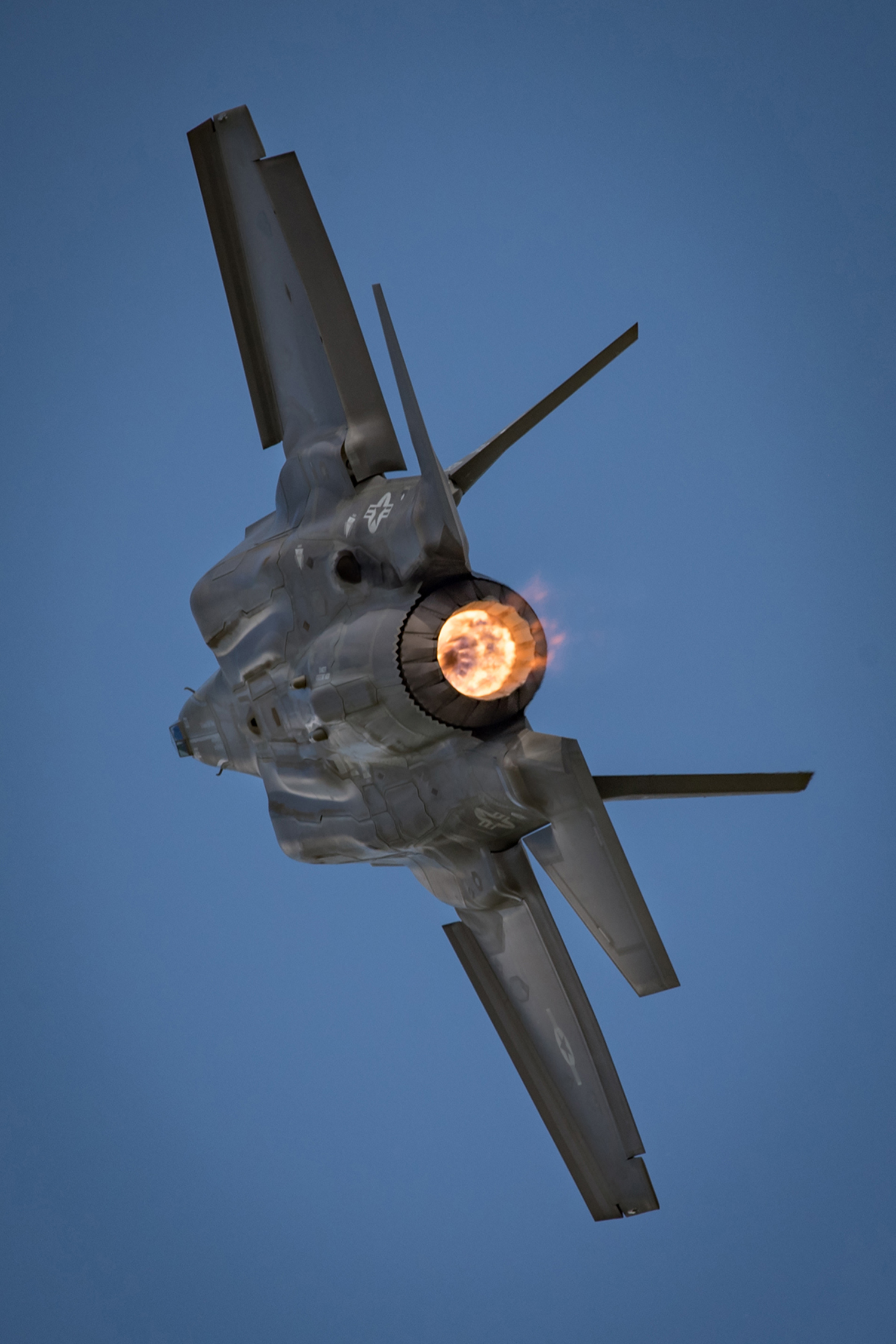
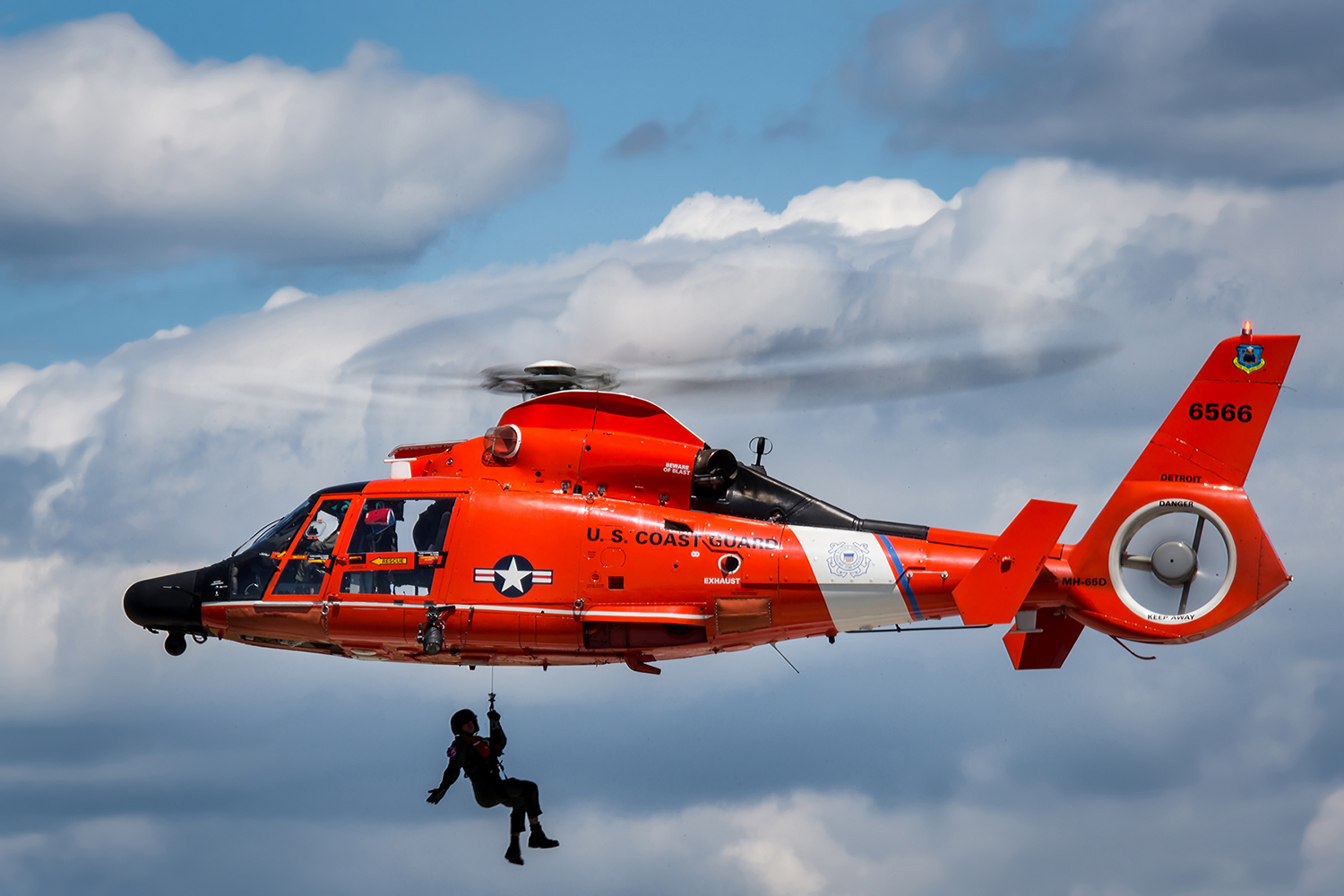
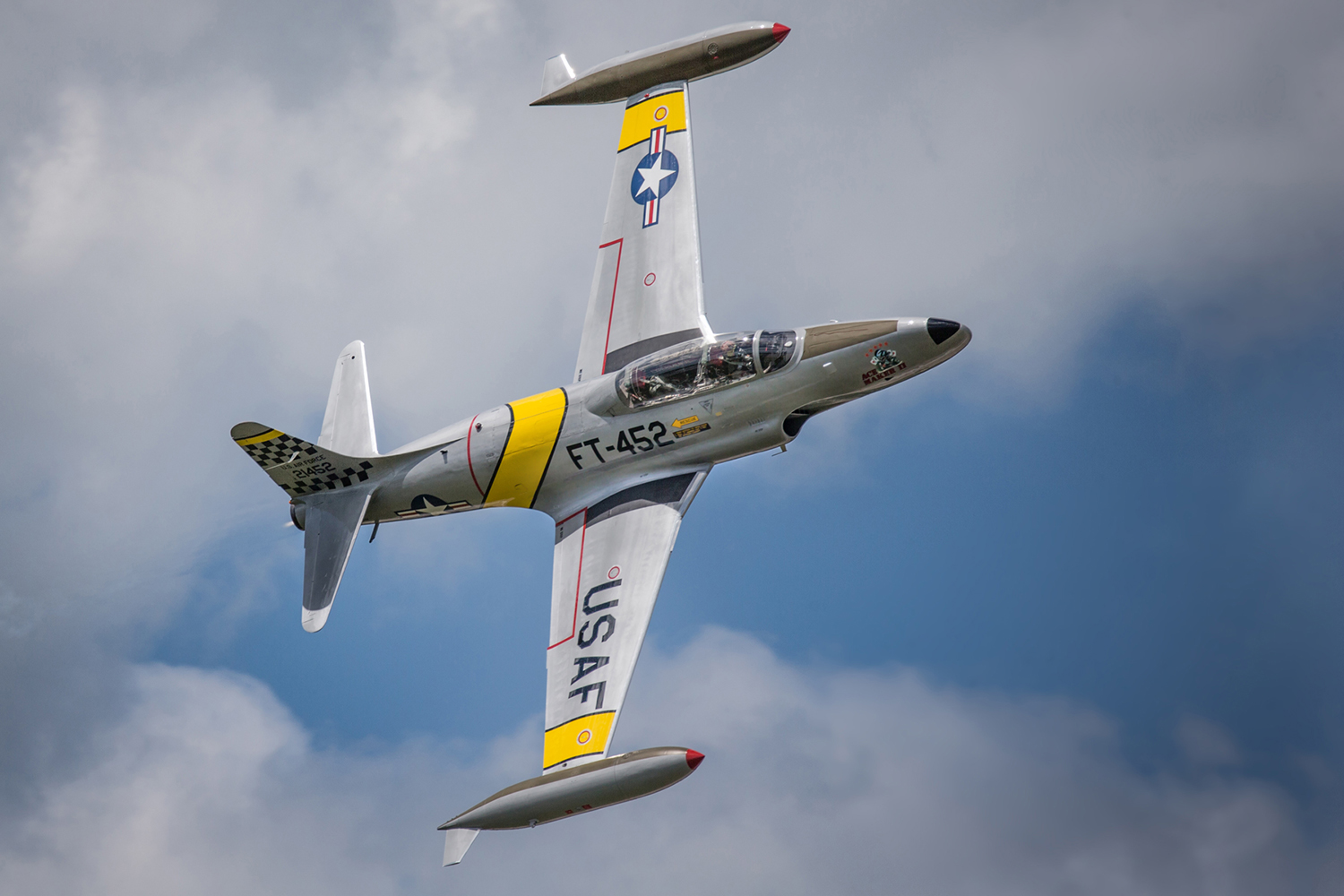
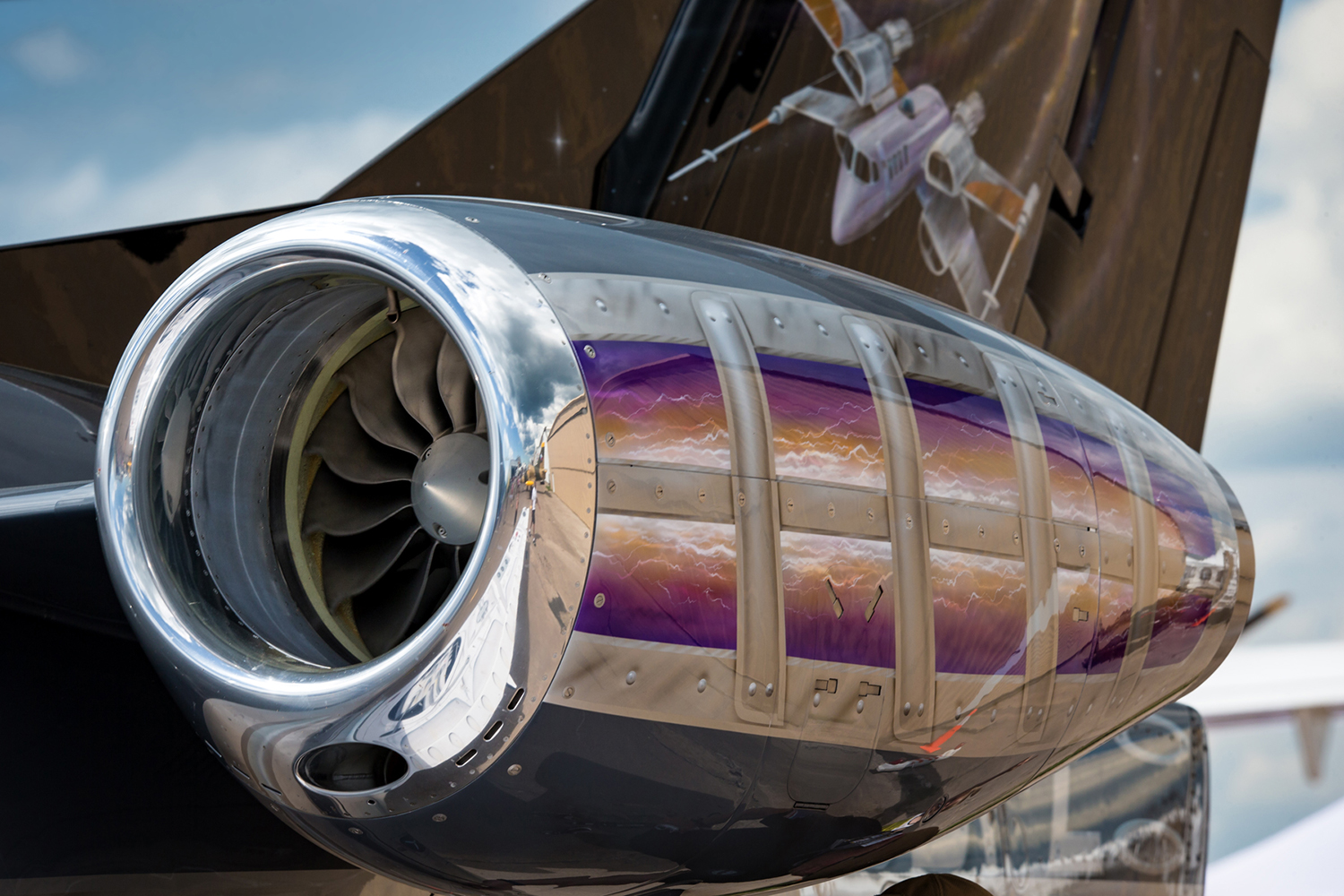
Finally, the Blue Angels fired up and taxied out to highlight the show. A great tip to keep in mind is that when the Blue Angels perform, they alternate between a formation fly-by and two separate jets doing crossing maneuvers. I used to get so caught up in the beauty of the formations that I forgot about the two jets screaming at each other and too often missed a great action shot. Not today. I was ready. The formations were easy to focus track and pan with the 100-400mm | C.
My system for capturing the crossing maneuvers is simply to lock onto one of the jets and as you feel they are getting close to each other, start shooting. It’s not really technical, and to be honest, there is a lot of luck involved as to whether you get both planes in a frame. They will do the maneuver, or something similar several times, so you should have a chance to try it again. Because of the speed each plane is traveling, and the fact that you are panning just one of the planes, the second one will always be out of focus. By picking a lower shutter speed, say 1/1000th of a second, you should get a larger blur caused by the other plane, which will give more of a feeling of speed.
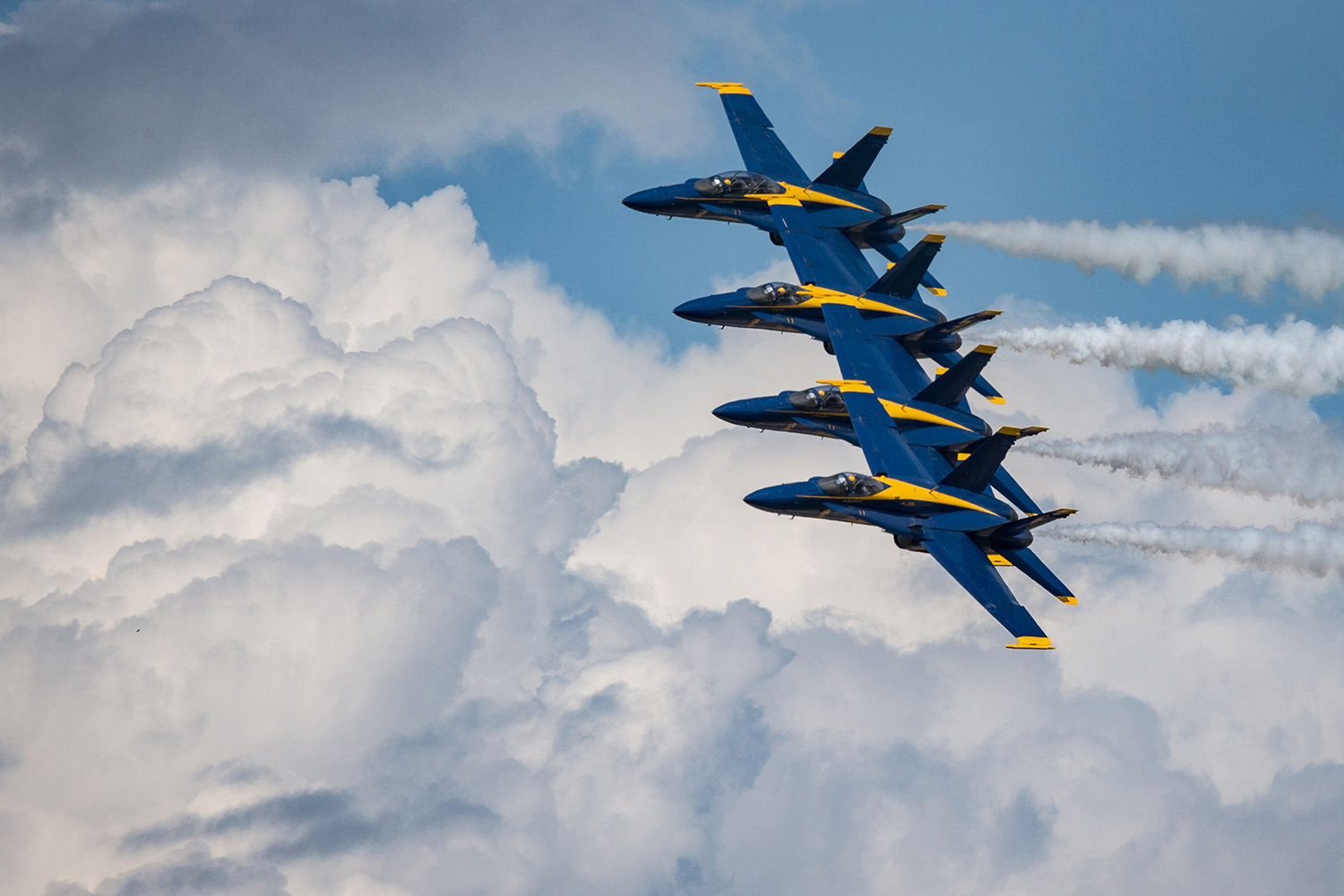
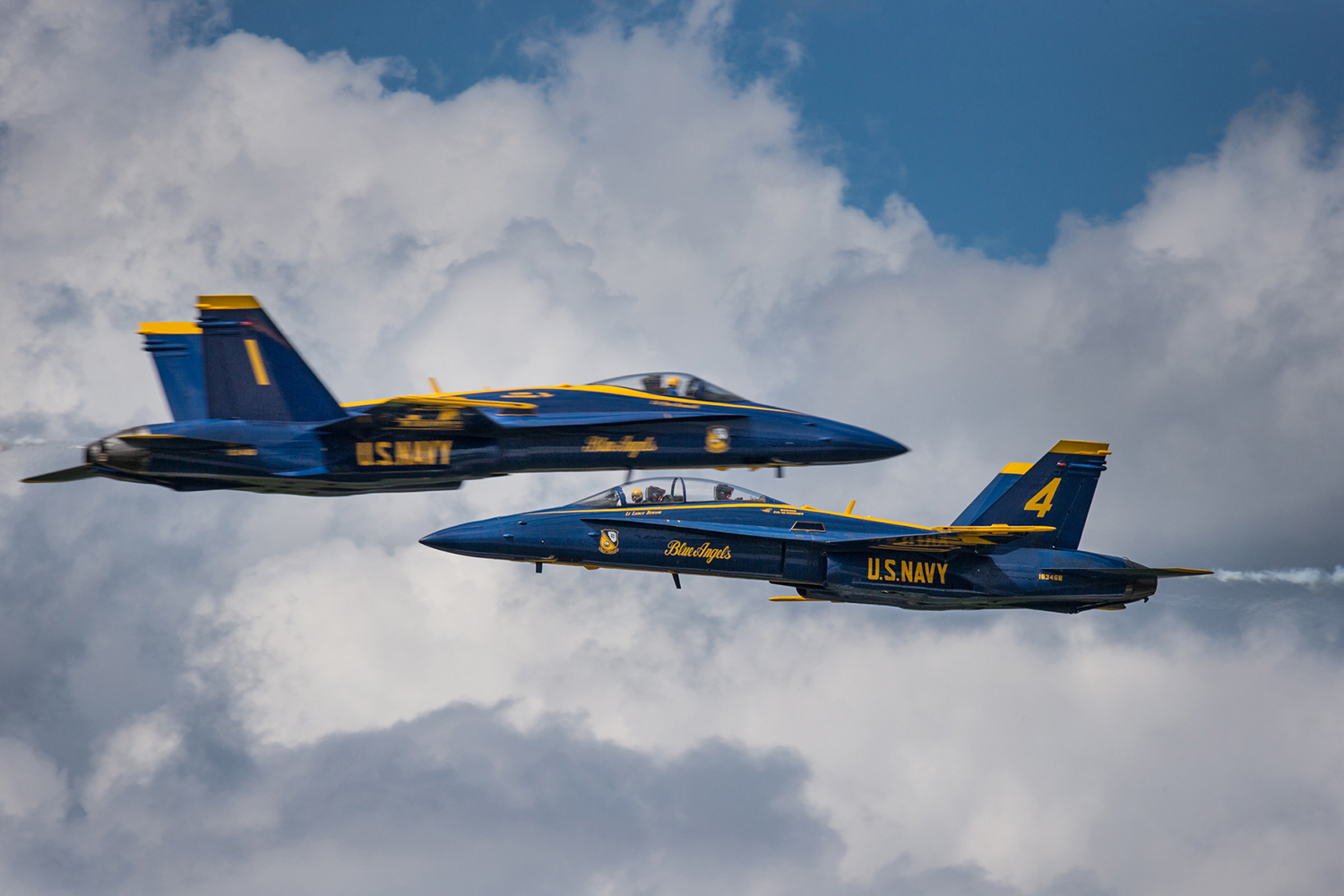
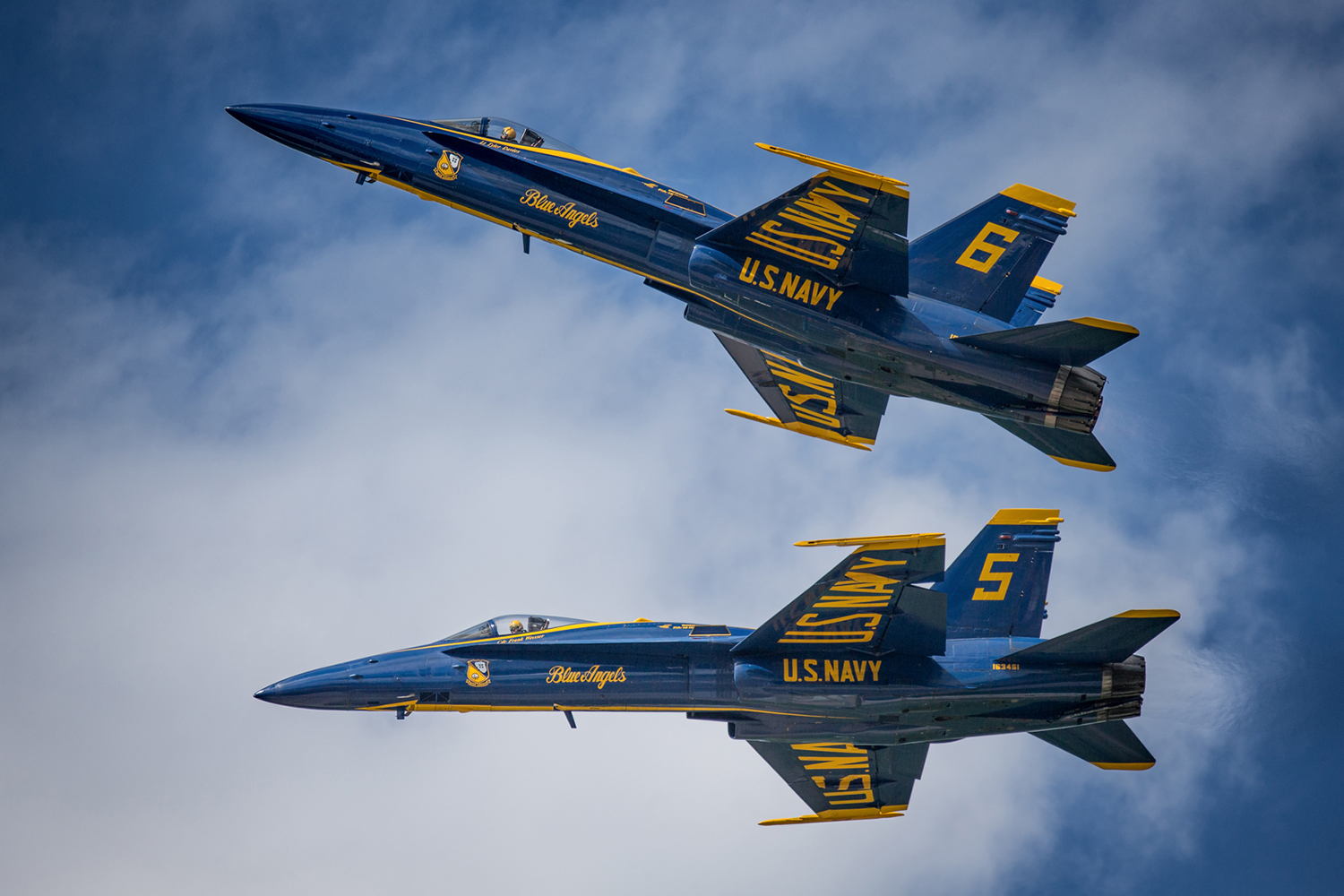
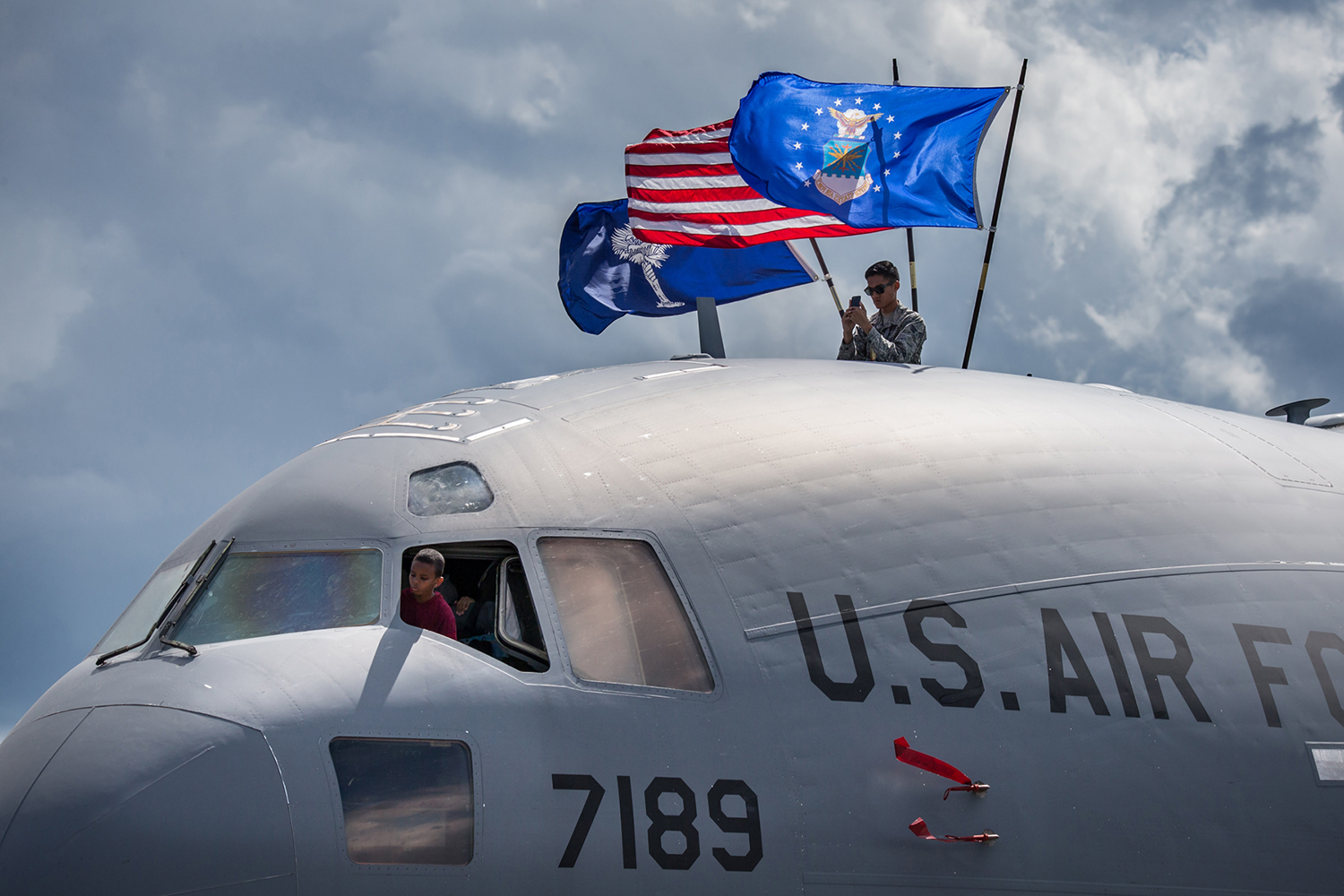
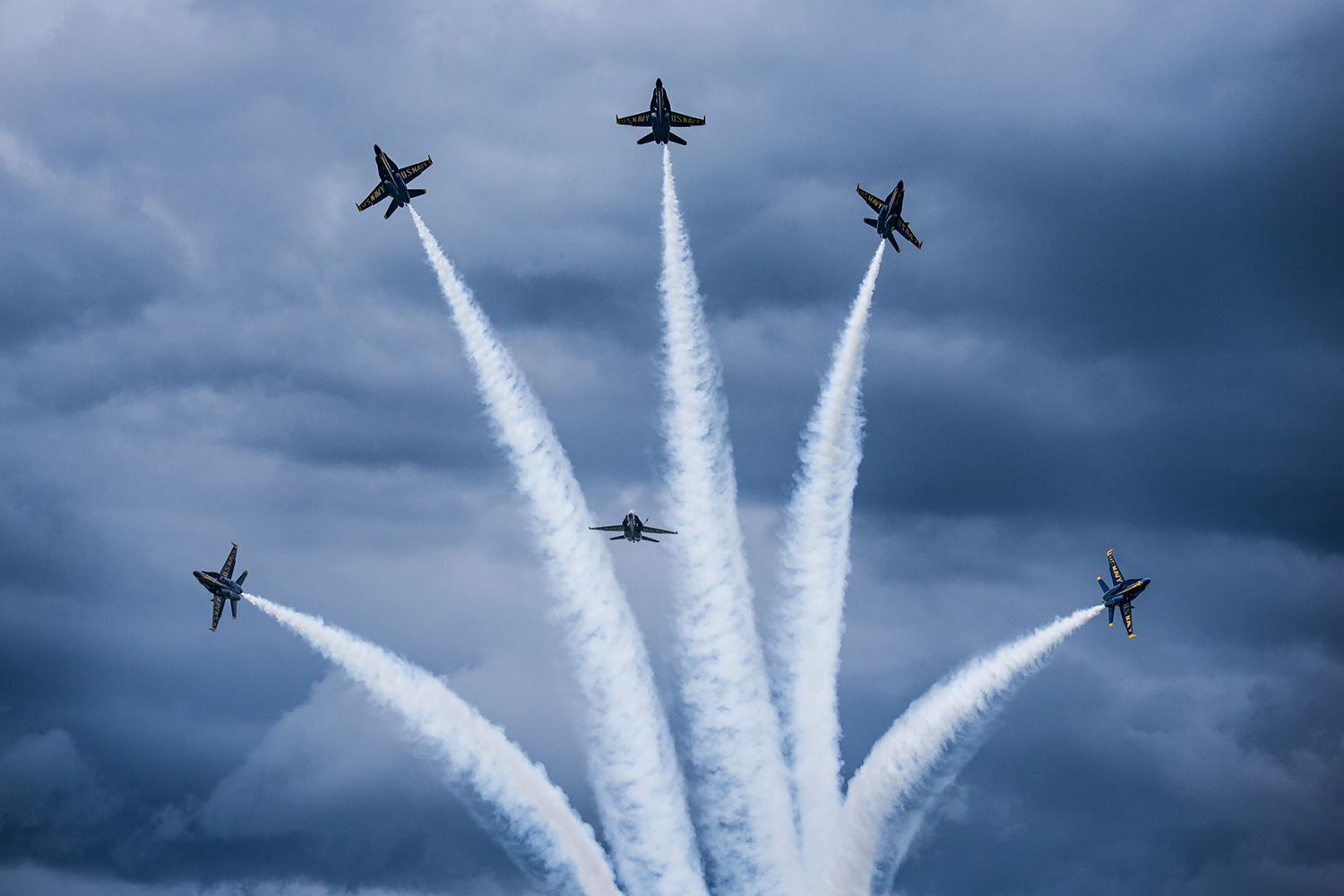
By the time the Blue Angels closed out the show, the dark clouds were back and the rain started. But as I made the long trip back to the parking lot, I was smiling. I had a few thousand frames and a feeling that the 100-400mm F5-6.3 DG OS HSM | Contemporary lens was a real winner. The smile never left my face as I started my post production work on the photos. The 100-400mm | C proved to be a very sharp lens. But if I were to try to put one word on this lens, I’d have to say versatile. So versatile that it has replaced the 70-200mm in my camera bag and is now my go to lens. No, that doesn’t leave my 150-600mm F5-6.3 DG OS HSM | Contemporary collecting cobwebs. Each has it’s place depending on the job I’m doing. And if you visit EAA AirVenture this year, you’ll see me using both.
